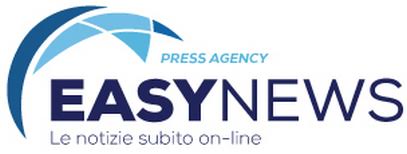Buongiorno,
Inviamo di seguito il commento “Preview BCE: un passo alla volta”, a cura di Frederik Ducrozet, Head of Macroeconomic Research di Pictet Wealth Management.
Restiamo a disposizione.
Un caro saluto,
Chiara Cattaneo
+39 3409597461
Preview BCE: un passo alla volta
- L’inflazione ha sorpreso al rialzo, con il dato principale dell’IPCA che ha accelerato più del previsto al 2,6% anno su anno a maggio. Ma soprattutto, l’inflazione core è salita al 2,9%, due decimi al di sopra delle aspettative, trainata dall’inflazione dei servizi, che è tornata al di sopra del 4% dopo il calo temporaneo di aprile, mentre l’inflazione core dei beni si è nuovamente attenuata (+0,8%). L’inflazione relativa al settore energetico è tornata in territorio positivo (+0,3%), mentre l’inflazione sui generi alimentari è scesa leggermente (+2,6%). Questa sorpresa si aggiunge all’accelerazione dei salari negoziati nel 1° trimestre della scorsa settimana, una ripresa che riteniamo temporanea.
- Nonostante il flusso di dati contrastanti, è quasi certo che la BCE taglierà i tassi nella riunione del prossimo 6 giugno, una manovra che è già da tempo prevista dai mercati e che probabilmente sarà approvata all’unanimità dal Consiglio Direttivo. Inoltre, già in aprile Christine Lagarde aveva chiarito che il Consiglio era pronto ad affrontare gli eventuali contraccolpi derivanti dal ciclo disinflattivo.
- La prossima settimana l’attenzione sarà rivolta altrove, a ciò che accadrà dopo giugno. Innanzitutto, i mercati cercheranno di capire se la riunione fornirà qualche indizio sulle future decisioni in materia di tassi d’interesse. L’esito più probabile è che il Consiglio direttivo si attenga all’attuale approccio di prendere decisioni in base ai dati in arrivo, riunione per riunione. Un’altra opzione sarebbe quella di fare un riferimento esplicito al fatto che le future decisioni sui tassi di interesse saranno prese su base trimestrale, con il supporto di proiezioni macroeconomiche aggiornate. Questo punto di vista sembra guadagnare terreno tra i falchi ed è stato esplicitamente sostenuto dall’influente governatore olandese Klaas Knot in un discorso della scorsa settimana. Questa opzione rassicurerebbe l’attuale valutazione di mercato dei futuri tassi di interesse della BCE (valutazione che Knot non ha respinto) e manterrebbe le proiezioni dello staff – che a loro volta utilizzano i prezzi di mercato come input – coerenti con il ritorno dell’inflazione all’obiettivo entro il prossimo anno. Può sembrare un’argomentazione generica, ma sarebbe in linea con la crescente incertezza sulle prospettive dell’inflazione e quindi con l’estrema dipendenza della banca centrale dai dati.
- In secondo luogo, i mercati si concentreranno sulle proiezioni aggiornate. I cambiamenti nelle ipotesi tecniche rispetto a marzo suggeriscono modifiche marginali, ma che dovrebbero essere più ottimistiche. Le proiezioni sulla crescita del PIL e sull’inflazione per il 2024 dovrebbero essere riviste leggermente al rialzo, riflettendo i recenti sviluppi. Questi cambiamenti marginali, in aggiunta alla crescita salariale del 1° trimestre pubblicata la scorsa settimana e alla forte inflazione dei servizi di maggio, sosterranno la tesi dei falchi secondo cui un taglio dei tassi a luglio non è giustificato. Ciò sarebbe in linea con il nostro scenario di una pausa a luglio dopo il taglio iniziale di giugno.
ENGLISH VERSION
ECB preview: one step at a time
- Inflation surprised the consensus to the upside today, with the headline HICP figure accelerating more than expected to 2.6% y/y in May. Most importantly, core inflation rose to 2.9%, two tenths above consensus expectations, driven by services inflation, which is back above 4% after a temporary dip in April, while core goods inflation has eased again (+0.8%). Energy inflation is back in positive territory (+0.3%), while food inflation fell slightly (+2.6%). This surprise comes on top of last week’s acceleration in negotiated wages in Q1, a pick-up that we believe to be temporary.
- Despite a contrasting data flow, the ECB is all but certain to cut rates at its meeting on 6 June, a move that has long been telegraphed to the markets and is likely to be unanimously approved by the Governing Council. Moreover, Christine Lagarde made it clear back in April that the Governing Council was prepared for some jolts in the disinflation process.
- Next week the focus will be elsewhere, on what happens after June. First of all, markets will be looking to see if the meeting provides any clues about future interest rate decisions. The most likely outcome is that the Governing Council will stick to its current approach of taking decisions based on incoming data, one meeting at a time. Another option would be to make an explicit reference to future interest rate decisions being taken on a quarterly basis, supported by updated staff macroeconomic projections. This view seems to be gaining ground among the hawks, and was explicitly supported by the influential Dutch governor Klaas Knot in a speech this week. Such an option would reassure the current market pricing of future ECB interest rates (a pricing that Knot did not push back on), and keep the staff projections – which in turn use market pricing as an input – consistent with inflation returning to target by next year. This may sound like a circular argument, but it would be consistent with the heightened uncertainty around the inflation outlook and thus the central bank’s extreme data dependency.
- Second, markets will focus on the updated staff projections. Changes in the technical assumptions since March argue for marginal changes, but they should be on the hawkish side. GDP growth and inflation projections for 2024 should be revised slightly higher, reflecting recent developments. These marginal changes, in addition to the sticky Q1 wage growth released last week and strong May services inflation, will support the hawkish case that a July rate cut is not warranted. This would be in line with our scenario of a pause in July following the initial cut in June.






